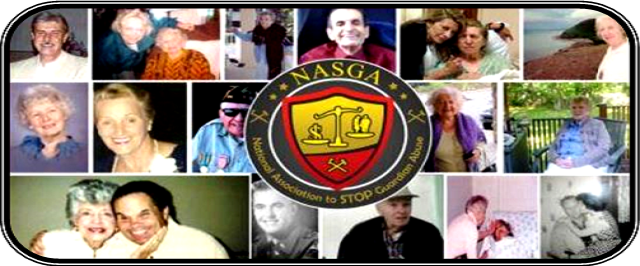Saturday, July 18, 2015
Making White House Aging Conference's Ideas Reality
The 2015 White House Conference on Aging (WHCOA) on July 13 was both alike and different from the five previous once-a-decade conferences. It was like them, because it broke new ground. And it was distinct in how it was pulled together and formatted, and in its array of results.
That it was held in July proved significant: It’s the same month we celebrate the 80th anniversary of Social Security and the 50th of Medicare, Medicaid and the Older Americans Act.
The conference’s four priority issues — elder justice, retirement security, healthy aging and long-term services and supports — were appropriate focal points for setting policy for the next 10 years.
Yet, perhaps the most distinct thing was how it truly was a “White House” Conference on Aging, directed to an unprecedented degree by the White House.
One significant difference in the 2015 version: Instead of the traditional “delegate” format, there were five regional forums leading up to the national conference for 200 invited guests and more than 600 self-developed “watch parties” around the country registered to witness it live.
The results of the conference are also significant, including an impressive array of public-private initiatives (summarized in this fact sheet). In the aggregate, they will both improve existing aging policy and programs and create new ways of improving the quality of life for people as they age. No fewer than 20 private-sector actions were announced at the conference. As they are implemented, they offer the real prospect to achieve positive change.
Policy Initiatives And Changes
Also, the policy initiatives announced by President Obama in his well-received remarks represent critically important directions for future aging policy. These include:
Retirement savings: Facilitating state efforts to provide workplace-based retirement saving opportunities through new rules from the Department of Labor.
Justice for victims: The U.S. Department of Justice will commit to train prosecutors from all 50 states to prosecute elder abuse and financial exploitation.
Food for the homebound: Agriculture Secretary Tom Vilsack announced a new rule to allow SNAP (Supplemental Nutrition Assistance Program, formerly called food stamps) benefits to be used for services that purchase and deliver food for homebound older adults.
Easy access to resources: The Department of Health and Human Services launched Aging.gov to provide older Americans and their families and caregivers a one-stop online shop for government-wide information and resources to help older adults live independent and fulfilling lives.
Supporting victims: Money will be directed from the Victims of Crime Act’s Crime Victims Fund to support social and legal services for underserved crime victims, including elder victims of abuse, financial exploitation, fraud and neglect. (Congress in 2014 voted to increase the funding from $700 million to $2.3 billion, dramatically expanding the amount available.) This action could direct an unprecedented new level of funding into elder abuse victim services.
Intergenerational Emphasis
Intergenerational activities were announced at the conference as well, including a partnership between the Surgeon General and the YMCA to “host intergenerational physical activity events during the first week of August to promote opportunities for young and older Americans to be active together.”
Encore.org, a nonprofit focused on leveraging the experience of adults in midlife and beyond to meet community needs, will be developing a national campaign to “mobilize older Americans’ talent to improve the prospects of vulnerable children and youth.”
Finally, one action which also reflects the changing face of aging was taken by the U.S. Department of Housing and Urban Development (HUD). It issued guidance confirming that all HUD-assisted and insured multifamily housing must be made available without regard to sexual orientation, gender identity or marital status.
A Vision For Secure Aging
Collectively, these proposals and others announced at the conference have the potential to better frame a national aging policy for the future. The vision of future aging policy is to empower all Americans as they age to: achieve economic and health security, age in place and at home as long as possible, be free from the scourge of elder abuse and prevent becoming victims of ageism through discrimination in the workplace, health care, housing or in receiving services.
This vision recognizes and respects the changing faces and cultures of older Americans, from the dramatic increases in minority older persons to the increased presence and visibility of the LGBT communities of older adults. Finally, this vision includes a multi- and intergenerational community for Americans to grow old in, representing collaborations between younger and older Americans.
The prospect of real change emanating from this White House Conference on Aging is contingent, however, on full implementation of the proposals announced and other actions, such as reauthorization of the Older Americans Act, further implementation of the Affordable Care Act to strengthen Medicare, greater national attention to long-term care and ensuring that Social Security is strong now and in the future.
The 2015 White House Conference on Aging, like those before it, provides an opportunity to shine a spotlight on something all Americans can relate to — aging.
Yet it is also about the opportunity for advocacy to affect change in aging policy and programs. The conference’s theme, after all, was “Empowering All Americans as We Age.”
The next decade, when the ranks of older adults swell as boomers continue to age, is a crucial time for programs and policies to adapt to meet the needs of this growing — and changing — population.
Full Article & Source:
Making White House Aging Conference's Ideas Reality
Subscribe to:
Post Comments (Atom)


1 comment:
How disappointed/angry are you that the elder justice panel did not mention abuse by professional guardians and the probate system?
Post a Comment